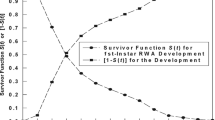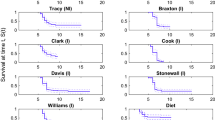Abstract
A theory and practical method are developed to evaluate insect survivorship as a continuous process in time and the effects of major factors that determine it, with a view to providing solutions to certain problems in survivorship studies. There are two ways of assessing mortality rates: nominal and marginal. A nominal rate is based on the number tallied in terms of the immediate cause of death; it depends on the method of observation employed and can be inconsistent between studies. A marginal rate is free of such inconsistency. The marginal rate attributable to the union of parasitism and disease is evaluated by frequent sampling in the field and rearing of each batch of samples in the laboratory for a short period of time. Comparing this rate with the field mortality rate, directly evaluated by sampling, determines marginal predation rate. The marginal parasitism and disease rates cannot be determined by observation. A computational method is developed to evaluate their approximate values. A step-by-step procedure of numerical calculations with data is provided in an appendix. The accuracy of estimating mortality depends on the frequency of sampling in the field and that of inspecting dead individuals in rearing. How frequently sampling and inspection should be conducted is discussed. The method of assessing parasitism developed here has a great advantage over the conventional method based on dissecting the samples, or rearing them through, that often results in a serious underestimation. Also discussed is the relative importance of mortality factors from the pest control point of view, and the concept of “joint contribution” is introduced. Other practical considerations include transportation of samples; rearing conditions; and how to deal with the “dead-in-the-field” in the samples, the “rearing-death syndrome,” and the “virtually dead” individuals.
Similar content being viewed by others
Author information
Authors and Affiliations
Additional information
Received: August 25, 2000 / Accepted: May 17, 2001
Rights and permissions
About this article
Cite this article
Royama, To. Measurement, analysis, and interpretation of mortality factors in insect survivorship studies, with reference to the spruce budworm, Choristoneura fumiferana (Clem.) (Lepidoptera: Tortricidae). Popul Ecol 43, 157–178 (2001). https://doi.org/10.1007/PL00012027
Issue Date:
DOI: https://doi.org/10.1007/PL00012027




